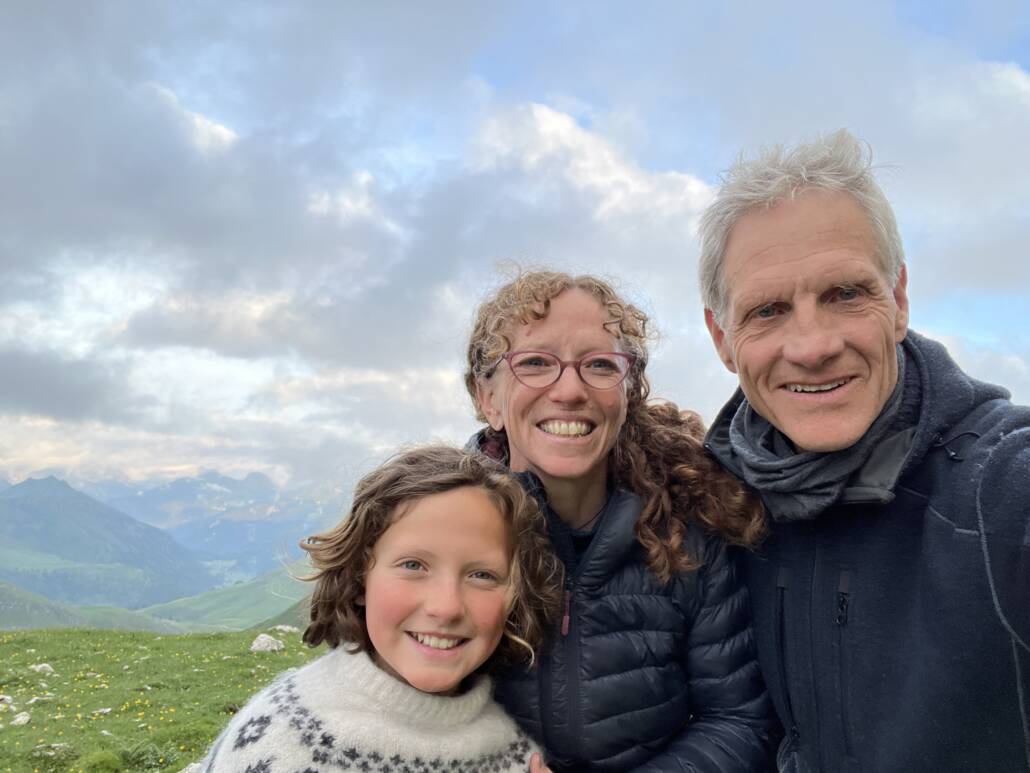Building an Alliance Between Firefighters and Street Safety Advocates
Bike and pedestrian safety advocates, including CalBike, were disappointed by the introduction of the Increase Fire Department Authority Bill (AB 612) by Assemblymember Chris Rogers. The bill gives greater veto power to fire departments, which sometimes oppose new bikeways on the basis that they could impede firefighting and EMS operations and potentially slow response times.
But the fire service and street safety advocates don’t have to take opposing positions, and they shouldn’t, according to Mike Wilson, a member of the Berkeley Disaster and Fire Safety Commission and a senior safety engineer at Cal/OSHA. A former firefighter, EMT, and paramedic, Wilson wrote the proposal (see the end of this post for a downloadable copy) for the Berkeley Fire Department’s new Street Trauma Prevention program manager position, working closely with Berkeley Fire Chief Dave Sprague, Walk Bike Berkeley, and Amory Langmo, president of Berkeley Firefighters IAFF Local 1227. The position is a first in California: it applies Berkeley Fire’s prevention expertise to the growing problem of street trauma. Wilson hopes to see fire departments across the state take a similar approach, which he says has multiple benefits for the public, the fire service, and individual firefighters and paramedics. We spoke with Wilson about his vision for collaboration between the fire service and street safety advocates.
Prevention, alongside rapid response
Most fire departments’ primary concern over new bikeways, speed humps, traffic diverters, or other infrastructure that protects vulnerable road users is that it could slow response times in the event of an emergency, something Wilson understands well after 13 years in the field. Wilson pointed out that a singular focus on emergency response, with little attention to prevention, is not new in the fire service, which had this same perspective about structure fires until the 1970s.
In 1974, the National Commission on Fire Prevention and Control issued a report called America Burning, highlighting the need for fire prevention programs as part of the core mission of the U.S. fire service, alongside its well-founded function of responding to and suppressing fires. Until that point, the Commission found that 95% of fire services funding was used for responding to fires, and only about 5% was spent on fire prevention.
“That report launched the whole effort within the fire service to establish prevention programs, and every city in the country eventually did that,” Wilson said. “Everywhere you look, there is something related to fire prevention, and it has been led by the fire service.” Cities and states passed fire codes and changed building codes with egress requirements, occupancy limits, fire suppression systems, and numerous other requirements.
This work resulted in a 64% reduction in fire-related deaths between 1977 and 2021, saving more than 5,000 lives in the decades since the report was published. Wilson points to that success as the foundation for a novel proposal: fire departments, which respond to many more EMS calls due to traffic collisions than fires, should apply their expertise at prevention to street safety. “The fire department can and should be drawing on its expertise in prevention when it comes to fires and apply that to street safety,” he said.
“The approach we took on the commission, working with Chief Sprague and Local 1227, was that the fire service has done a great job at prevention and has really taken fire prevention seriously,” Wilson said. “Prevention is the flip side of response. The fire service has demonstrated its ability to do both really well.”
As a result of that focus on prevention, an average of two people per year were injured in structure fires over a recent five-year period in Berkeley. But during that same period, an average of 694 vehicle occupants, cyclists, and pedestrians were injured, and five were killed, each year, in traffic collisions. “Our opening position on this was that Berkeley needed the fire department to build a prevention program on street trauma,” he said. “If government is all about allocating resources to the highest need, street trauma clearly represents a gigantic gap in making the city of Berkeley a safer place for the people who live and work here.”
Prevention benefits everyone
During Wilson’s 13 years as a firefighter, EMT, and paramedic, he estimates that he responded to more than 10,000 emergency calls, including many hundreds involving street trauma. Among those, a few stand out as the worst: kids getting hit by cars, many of whom didn’t survive, and doing everything possible as a paramedic to keep them alive from the street to the trauma center. “Paramedics often witness their patients’ last moments,” Wilson said. Dealing with the aftermath of street trauma “takes a toll on the mental health of firefighters and other first responders, and particularly on paramedics,” he said.
Reducing the number of injuries and fatalities due to traffic collisions will reduce exposure to severe trauma among firefighters and paramedics, who have high rates of PTSD due to the demands of their jobs. “The fire service is recognizing that mental health and post-traumatic stress injuries are a real thing,” Wilson said. California has passed bills and allocated resources to support first responders who struggle with mental health issues. In Wilson’s view, one way to support them is to reduce their exposure to critical injuries and fatalities from street trauma, which are some of the worst calls they will go on in their careers.
Wilson also has a personal reason to advocate for prevention. In 2016, a car hit his wife, Dr. Megan Schwarzman, on her bike from behind in what he calls a “catastrophic collision.”
“She barely survived, thanks to the efforts of Berkeley Fire and Highland Hospital’s Trauma Center,” he said.

“Fire departments are focused on response times, and I get that. I lived that for years. Meg survived because Berkeley Fire was on scene in two minutes, with multiple pieces of equipment, and they extricated her from under the car in four minutes,” he said. “They were phenomenal, state-of-the-art. And at the same time, her collision was 100% preventable. It was a terrible street design that dumped cyclists directly into the right lane of traffic.” The better outcome would have been a prevention mindset in street design that separated the lanes with hardened barriers, a step that would have spared Meg and her family the trauma in the first place.
Mode shift could improve response times
There is a growing body of evidence showing how bike lanes and other street design changes can save the lives of cyclists and pedestrians, but there isn’t a lot of data on the impact of bikeways on emergency response times; what little there is appears to show not much difference before and after. Wilson sees a long-term upside to safer infrastructure for people biking and walking: “If you build the infrastructure in ways that are safer for bicyclists and pedestrians, that infrastructure will get used.” He cited a survey of Berkeley residents that found 27% regularly bike or walk for daily needs, and another 27% would bike or walk if it were safer. To feel safer, 86% of respondents reported wanting concrete-protected bike lanes, and 74% wanted parking-protected bike lanes.
That mode shift would reduce vehicle congestion, which is the biggest access issue for fire and EMS response. “The problem of cars blocking access by fire and EMS equipment, that’s the big impediment when it comes to getting your equipment through,” Wilson said.
Reshaping the Increase Fire Department Authority Bill
Wilson has opened conversations with some of the backers of AB 612, and he’s hoping to get them into conversation with CalBike and other active transportation advocates. “I think of [AB 612] as overly narrow in terms of the mission of the fire service,” he said. “It begins with the assumption that the only role of the fire department is rapid response. That’s obviously important, but it’s not the whole picture. The history of the fire service underscores that.”
Wilson hopes the bill will be amended to include the fire service’s potential to be a “serious ally for street safety.” To that end, members of the Berkeley City Council have asked the Disaster and Fire Safety Commission for direction on the bill and are hoping to work with Assemblymember Buffy Wicks, encouraging her to meet with the author to revise the bill to cover street trauma prevention, alongside response.
“The question is not only how do we get to these critical incidents quickly, but how do we support the development of a genuinely safer city? That’s the vision of a modern fire service.” — Mike Wilson
Thanks to Wilson’s work with Chief Sprague, IAFF Local 1227, and Walk Bike Berkeley, the City of Berkeley has hired its first Street Trauma Prevention program manager, who reports to Fire Chief Sprague. It’s too soon to measure the impact, but it’s a mindset shift other communities should replicate.
Mike Wilson’s presentation on street trauma prevention
Proposal to the Berkeley City Council


